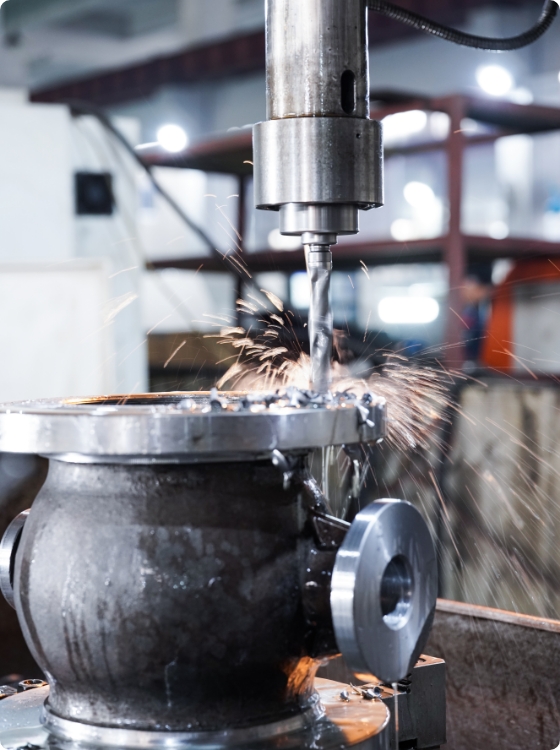INDUSTRIAL VALVES
Ball valves are widely used for controlling the flow of fluids in industrial and commercial piping systems. The tight shut-off feature of these valves makes them particularly suited for flow control applications in high pressure and high-temperature conditions. They are commonly used in catalytic reforming, refining, power, marine, petrochemical, and process industries. Design engineers developing valves for demanding applications should match the performance of the valve's component elements with the required flow, temperature, and pressure conditions. Carefully designed high pressure and high-temperature ball valves can sustain temperatures as high as 400°F and elevated pressures up to 10,000 psi.
PANS, your trusted provider of international-standard valves.
How Does Ball Valves Work?
Ball valves use hollow balls that allow flows through them when they are open and isolate when they close. The balls are driven using spindles that fit into the slots milled into the hollow balls, which are in turn operated by levers to close and open the balls. The ball valves spindles are encased in the valves’ necks and are sealed using a wide array of neck seals; this prevents leakages, and in addition, the balls are sandwiched between ball/body seats to ensure positive and absolute sealing.

DOWNDLOAD OUR COMPANY PROFILE
Ball Valves Circuit Function
Ball valves may feature 2 (2-way), 3 (3-way) , and in some cases 4 ports (4-way). Most of the valves are 2-way and are operated manually using a lever; this lever is aligned with the ball valve’s pipe whenever the valve has been opened. Once it’s closed, the lever is perpendicular in position to the pipe.
The flow in the ball valves is simply from the output and input of the 2-way valves. Manually-operated valves can be quickly closed, meaning that there’s likelihood of water hammering with quick-flowing media. Other valves feature transmissions. 3-way ball valves have T or L-shaped bores, which affect the flows directions; this results in different circuit functions, such as mixing and distributing flows in different directions.
Alternatively, you can use automated ball valves; these are fitted with pneumatic or electric actuators. They offer more convenience since they can be operated remotely.

Ball Valves Operation
As the balls open and close between the seats, they provide wiping motions and clear any suspended particles from the balls’ surfaces. It’s important to note that coarse solids damage the balls’ surfaces and seats which eventually results in leakage. Fibrous, stingy, and solid materials help in preventing the balls from closing. The most prevalent ball valve layout is the 2-way design; it facilitates the flows to move from the valves’ inlets to outlets. 3 and 4-way ball valves help the flows to move in several directions.


Contact Us
If you want to get a quotation or more product details, please leave us a message.







